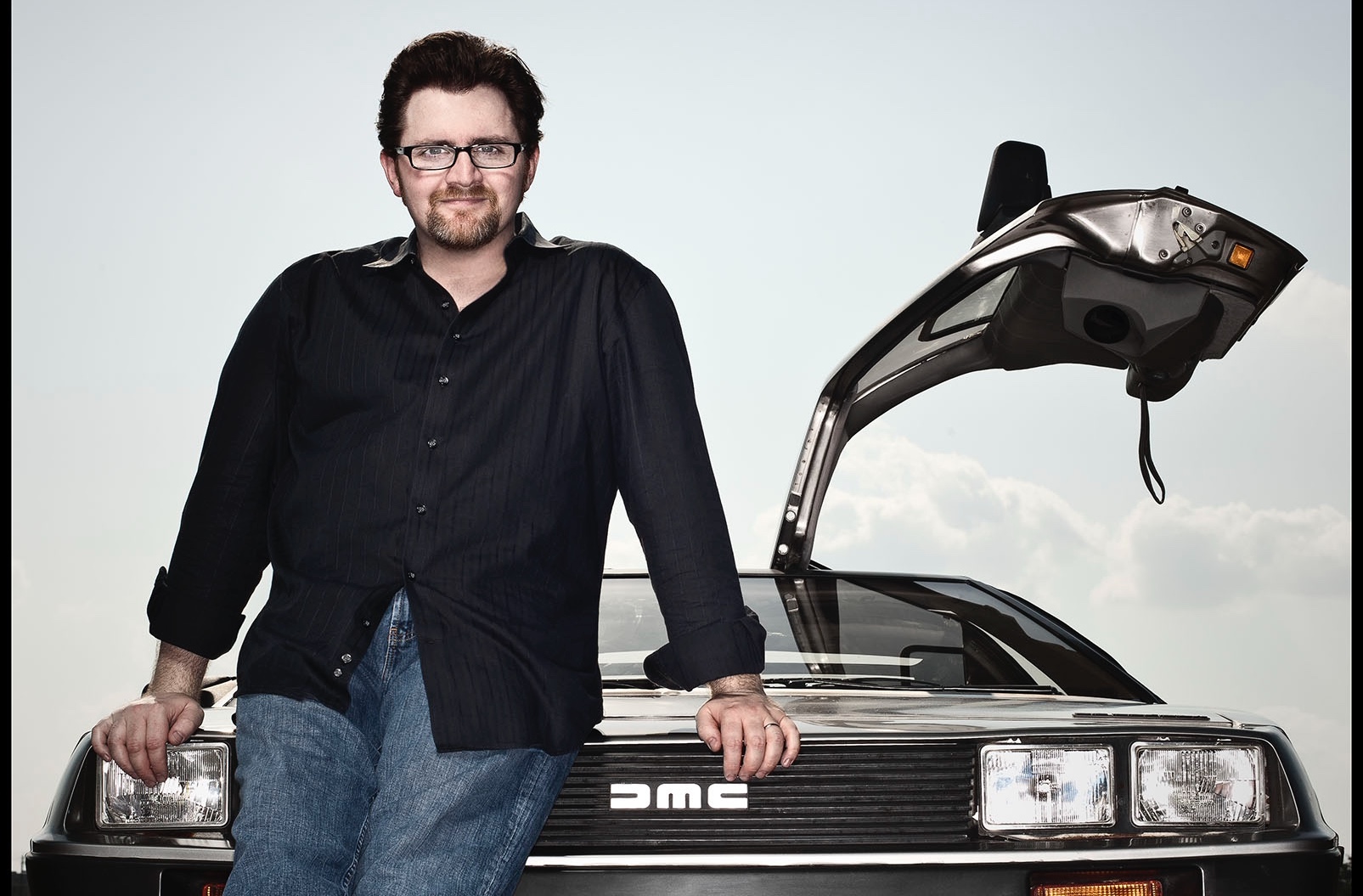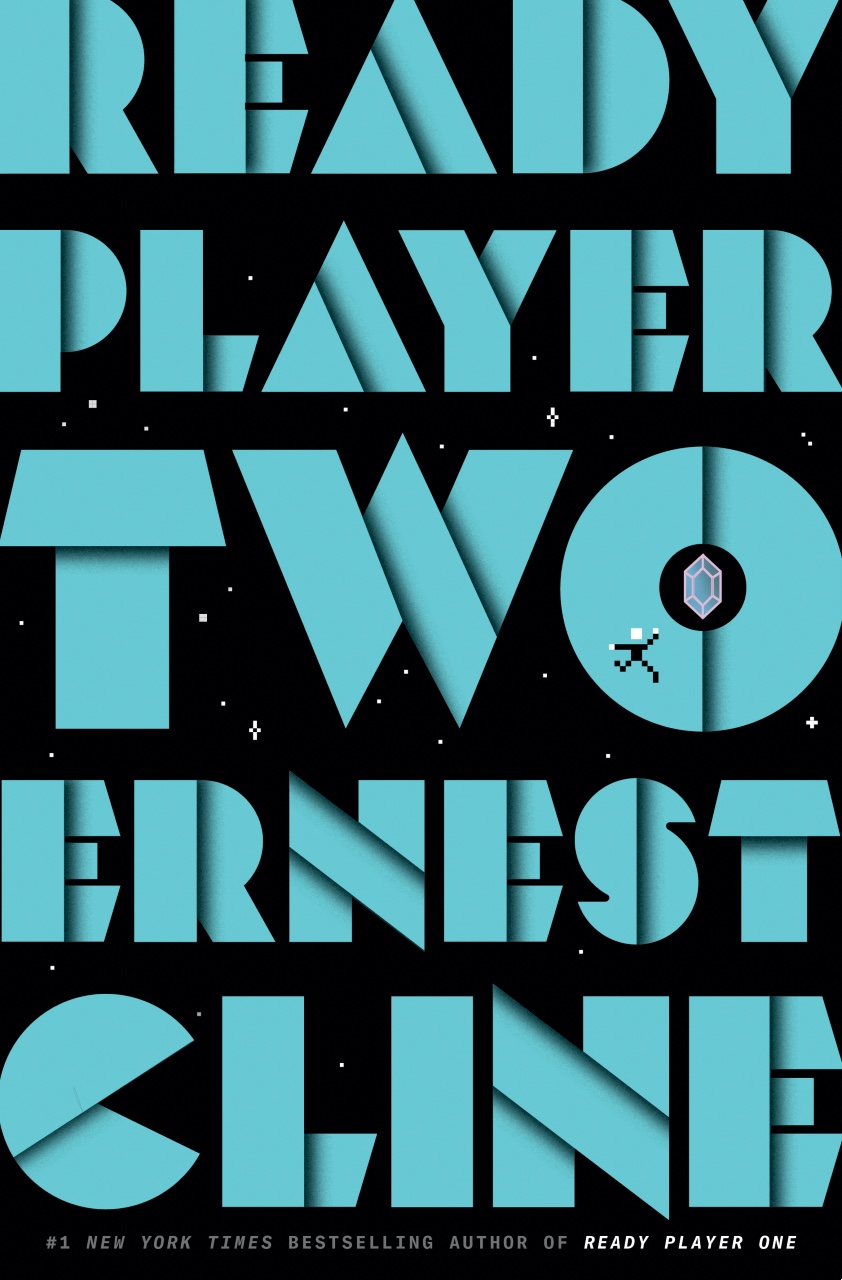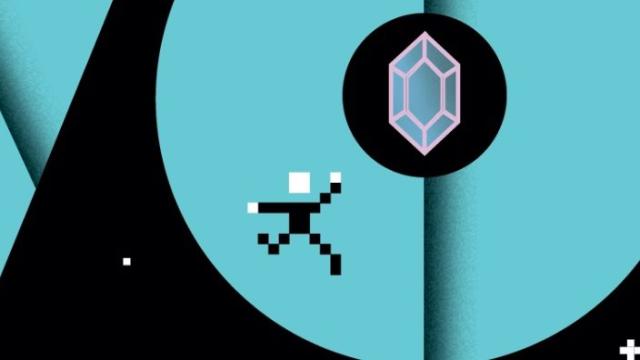Sequels are hard; any fan of pop culture can tell you that. A sequel can’t just match the success of the original, it has to expand on and deepen it. Recontextualise the whole thing in new and exciting ways. Very few sequels achieve this and no one would know that better than fans of, or characters in, Ernest Cline’s Ready Player One. Unfortunately for both of those parties, despite a more than valiant effort, Ready Player Two will join the list of sequels that didn’t quite reach the next level.
Picking up where the first book left off, Ready Player Two tells another sprawling digital adventure in a virtual reality world filled with oodles of pop culture passion. In a shift from the first story though, the sequel deliberately attempts to dial back the references, at least a little bit, to explore profound themes and ideas. Often it’s successful, most times it’s not, and the end result is a wildly uneven book that can be really fun but is mostly frustrating.

Ready Player Two once again follows Wade Watts, aka Parzival, a super nerd who, after the events of the first book, is one of the most rich, famous, and powerful people on the planet. Along with his friends Artemis, Aech, and Shoto, he now runs the OASIS, an infinite virtual reality where most of culture takes place. It turns out, though, the OASIS was just the beginning — its creator, James Halliday, left the winner of his contest (Wade) a new technology called OASIS Neural Interface. Abbreviated to ONI, this new tech makes a dangerous connection to users’ minds that gives them the ability to physically experience the OASIS. In other words, though you’re sitting at home with a headset on, everything feels, smells, tastes, and sounds completely real because it’s tapping straight into your brain. Users can also record memories, share them, and relive them with others. Anyone can be anyone and experience anything they want to experience, full stop. It’s a whole new chapter of human evolution and Halliday wasn’t sure if the world was ready for it. Wade, Aech, and Shoto are though, so they hastily release ONI, once again changing the entire world.
For the first eight chapters, Cline explores that story. How a clueless fanboy doesn’t quite understand the power he has, how fame and fortune have changed him, and how releasing ONI technology has unfathomable results (including his once-girlfriend Artemis dumping him). Wade and his friends debate the merits and impact of ONI all while Wade wallows in self-doubt and self-pity. As this is happening, Ready Player Two feels full of promise, like a new evolution in this story, a grander and more complex sequel. It seems as if Cline is going to examine the dangers of technology, invasion of privacy, the problems with a purely pop culture world, all of it. Best of all, he even hints at the conclusion that a teenage kid who knew how to recreate WarGames might not be the best person to control everything on the planet. All of this is as good as Ready Player Two gets.
[referenced id=”1113587″ url=”https://gizmodo.com.au/2018/06/the-dangers-of-techs-privacy-promises/” thumb=”https://gizmodo.com.au/wp-content/uploads/2018/06/20/icqtodelxzssqpjwxz0l-300×169.jpg” title=”The Dangers Of Tech’s Privacy Promises” excerpt=”Where do you go to tell a secret? Probably depends on the secret. What you’d feel comfortable murmuring to a friend in a private meeting is likely not what you’d say loudly to a coworker while your boss is in earshot. Online, we not only communicate, we calculate – based…”]
Funnily enough, it’s also this section of the book that’s the most similar to the previous novel in terms of wanton pop culture jargon. Armed with unlimited resources, characters create mansions that look like The Lord of the Rings’ Rivendell, buy likeness rights to make actual mashup movies of Back to the Future and Ghostbusters, and hire Sean from Good Will Hunting as a therapist. It’s a bit insufferable but it’s fine since the story at this point has such potential.
That all gets pushed aside though when a new foe emerges and threatens to kill every single person in the OASIS unless Wade and his friends complete a new quest: a quest for the seven horcruxes shards. That’s when Ready Player Two flips entirely on its head.

This is also the point in the review where I make this shocking admission. I really liked Ready Player One. The first time I read it, I finished it in a single sitting. I devoured it. I even went back and read it again before the movie came out (I liked the movie less but didn’t hate it). Though I certainly agree with the very valid criticisms people have of the book, I’m just a huge sucker for pop culture references. The idea of an epic Willy Wonka adventure in this nostalgic world won me over, flaws and all. That’s important to admit because “a fanboy knows a hater” and I’m much more the former than the latter.
So when Ready Player Two goes from the ramifications of the first book to a brand new quest with even greater stakes and more puzzles to solve, I instantly perked up. I soon realised, though, that Ready Player Two’s quest simply isn’t that interesting. The stakes are bigger, there are more artifacts to find, and yet that thrill of the chase is gone.
Cline smartly ventures into other areas of culture with these quests (music, romantic comedies, feminism), but everything about them is hugely imbalanced. A few are short, sweet, and impactful. Others are totally random and feel out of place. Some are way too long and overly descriptive. And they all lead up to a final quest that blips by so quickly you almost can’t believe it’s over. This section of the book is less brazen with its pop culture references — oh sure, they’re still there, but are mostly in service of telling a single, cohesive story, which is most welcome. Oddly, though, it turns out the more time Cline spends diving into a single sliver of pop culture rather than multiple areas, the more repetitive and frustrating it can feel.
The fact that the book has almost two halves, and each of those two halves have pluses and minuses, speaks to some of its larger issues as well. Cline may be 48 years old but he’s writing about a teenage nerd in the voice of a teenage nerd, and this teenage nerd character, like Cline, seems to be learning on the fly. At times, the story feels like the meandering work of someone from the past trying to navigate this new, culturally enlightened landscape we live in; while the book does stuff like bring in more powerful women and talk openly and inclusively about sexuality, it doesn’t always work. Sometimes it’s engaging and interesting, other times it’s short-sighted and awkward. It feels well-intentioned, but the entire thing reads like Cline is attempting to psychoanalyze two halves of himself through dichotomies in the story. There’s the nerdy fanboy from book one, still totally obsessed with every little detail. Then there’s the older, richer, wiser, and more influential person in book two, who is trying to be a bit more introspective and respectful but hasn’t quite figured it all out yet.

You also see this in the book’s main quest for the seven shards. The shards are part of a larger story regarding Kira Underwood, a character from the first book who is mostly used as a device to explain the rivalry between the two founders of the Oasis, Halliday and Og. That Kira is now the focus of the entire book feels like Cline’s acknowledgment that his women characters need more depth. But the ways in which he achieves this for her are so incredibly heinous and cruel, you almost wish it wasn’t the case. So again, you have the author learning, but fumbling the attempt.
This happens with some of the other new characters too (of which there are not as many as you’d expect in a sequel). Early in Ready Player Two, Cline introduces L0hengrin, a YouTube star and fellow nerd that helps Wade and his friends. Lo, as they call her, is a trans woman, and her storyline included some terribly clumsy attempts to explain Wade’s fascination with her and humanity’s new outlook on such things. Unfortunately, the book messes it up further, ultimately using Lo and her friends as mere plot devices, never exploring anything about her character, and making the mention of her gender feel like nothing more than window dressing.
This goes on and on and on. Good things turn to bad things, bad things turn to good things. The whole book resembles a roller coaster of moral ambiguity, never quite sure which way to turn next. By the end (which is bonkers and something we’ll discuss at a later date), it’s unclear if Cline has any idea what message he wants to convey. He seems to present every one imaginable.
Despite all of that, there are a few chapters and moments where Cline really hits his stride, places he finds the perfect combination of pop culture nostalgia to make you smile and give you goosebumps. Or he’ll concoct the most ludicrous notion only possible in his fictional world that it’ll make you truly wish it existed. It doesn’t happen often but the times it does, so many of the flaws in Ready Player Two melt away, even for a second, and you’re just happy to be there.

Nevertheless, I wanted more from Ready Player Two. After starting with a lot of promise, most of what’s interesting about it slowly fizzles away. The adventure can be great, but in borrowing the broad structure from the first book, it loses some of its excitement. Ideas created by the ONI technology show Cline’s imagination is impressive, but some of that gets lost in excessive exposition. While the book is full of complex issues with an eye on trying to tackle them with just the right touch, most of the time, it simply doesn’t.
Fans of the first book will certainly find things to like about Ready Player Two. I know I did. But, like me, they’ll also find lots not to like and not in the ways “haters” might expect. Sequels are supposed to be bigger and better and while Ready Player Two is certainly bigger, it’s far from better. It’s a partially entertaining, but more often disappointing, sequel.
We’ll have much more on Ready Player Two in the coming days. It’s in stores now.
